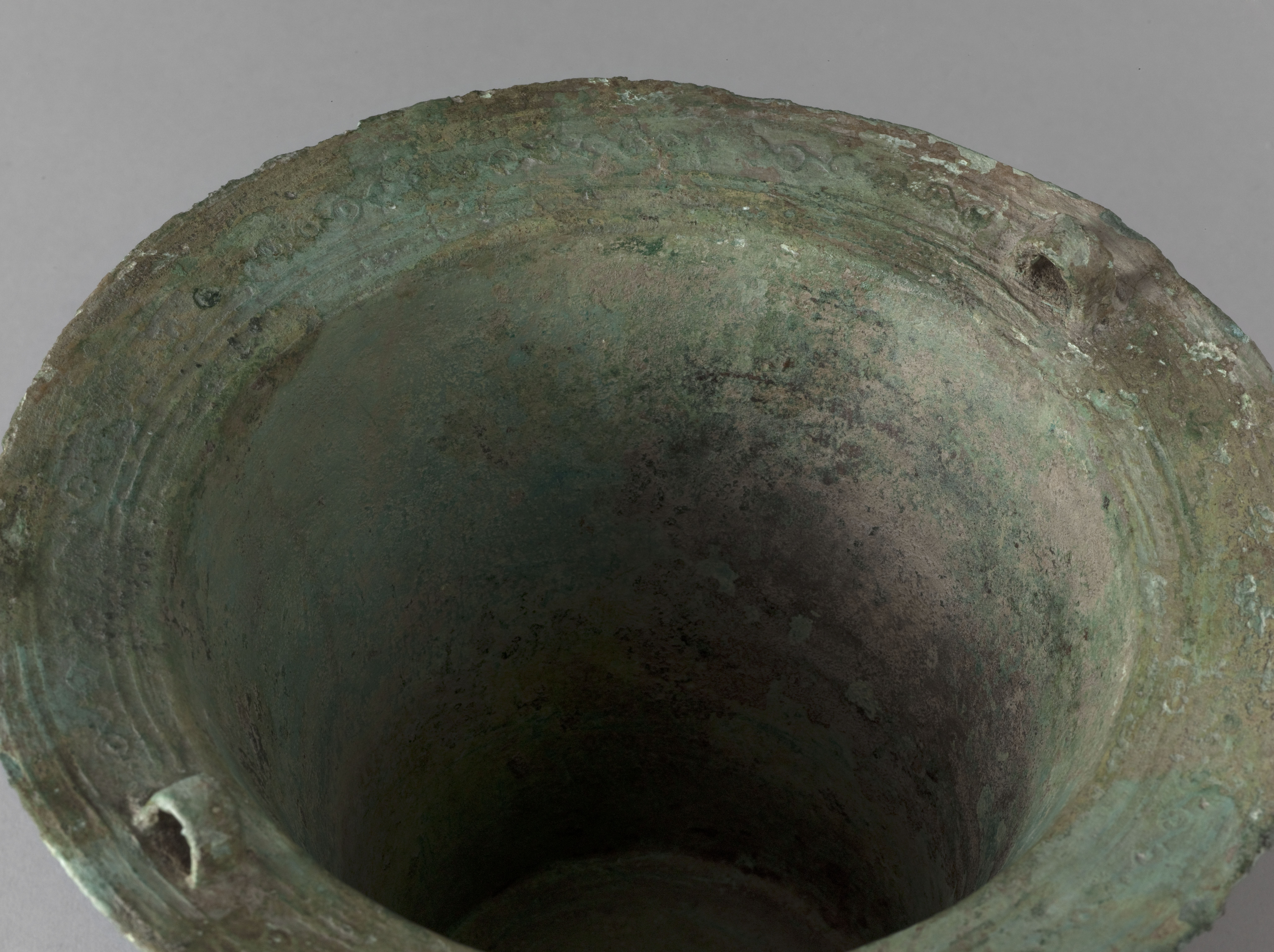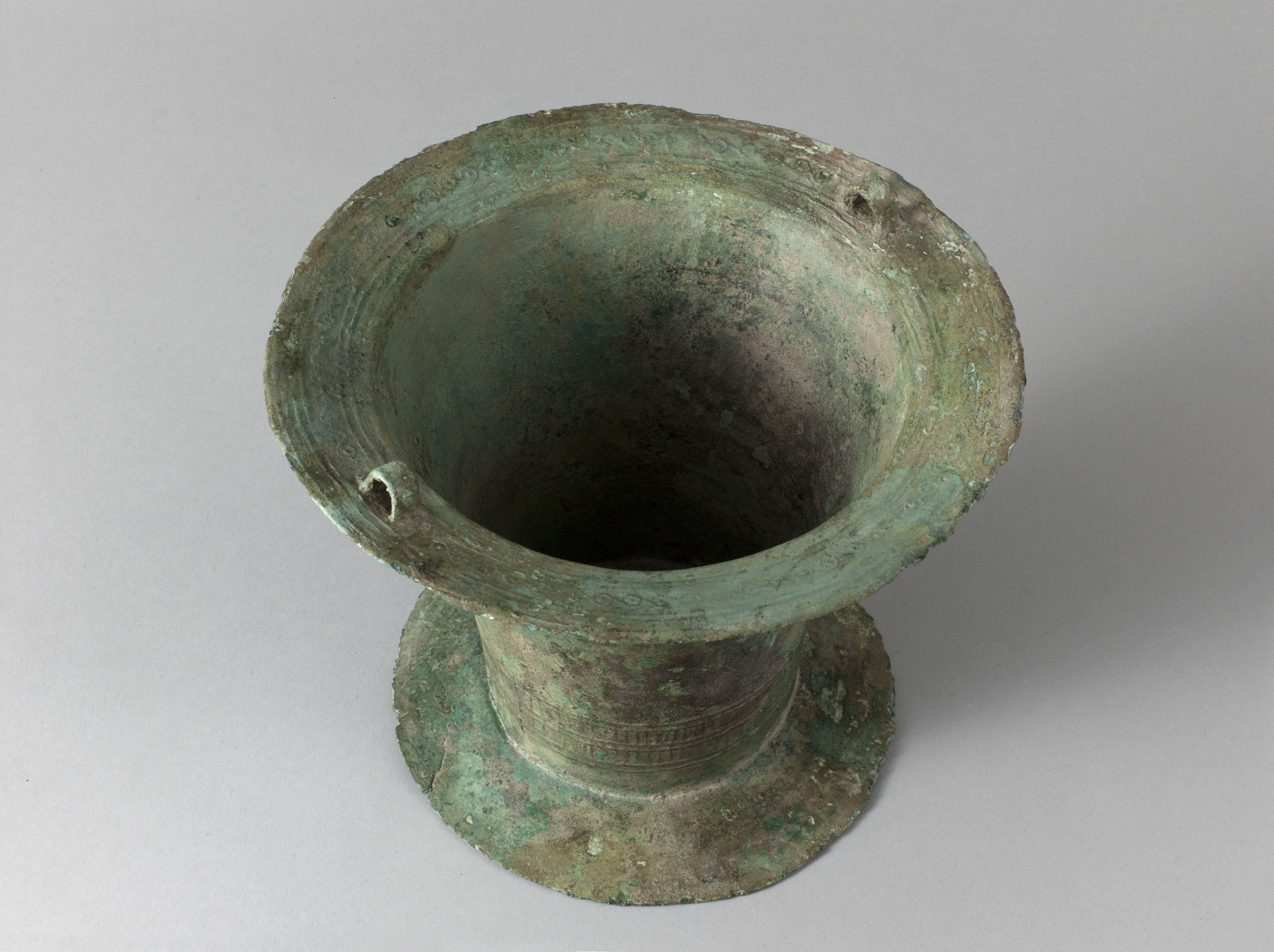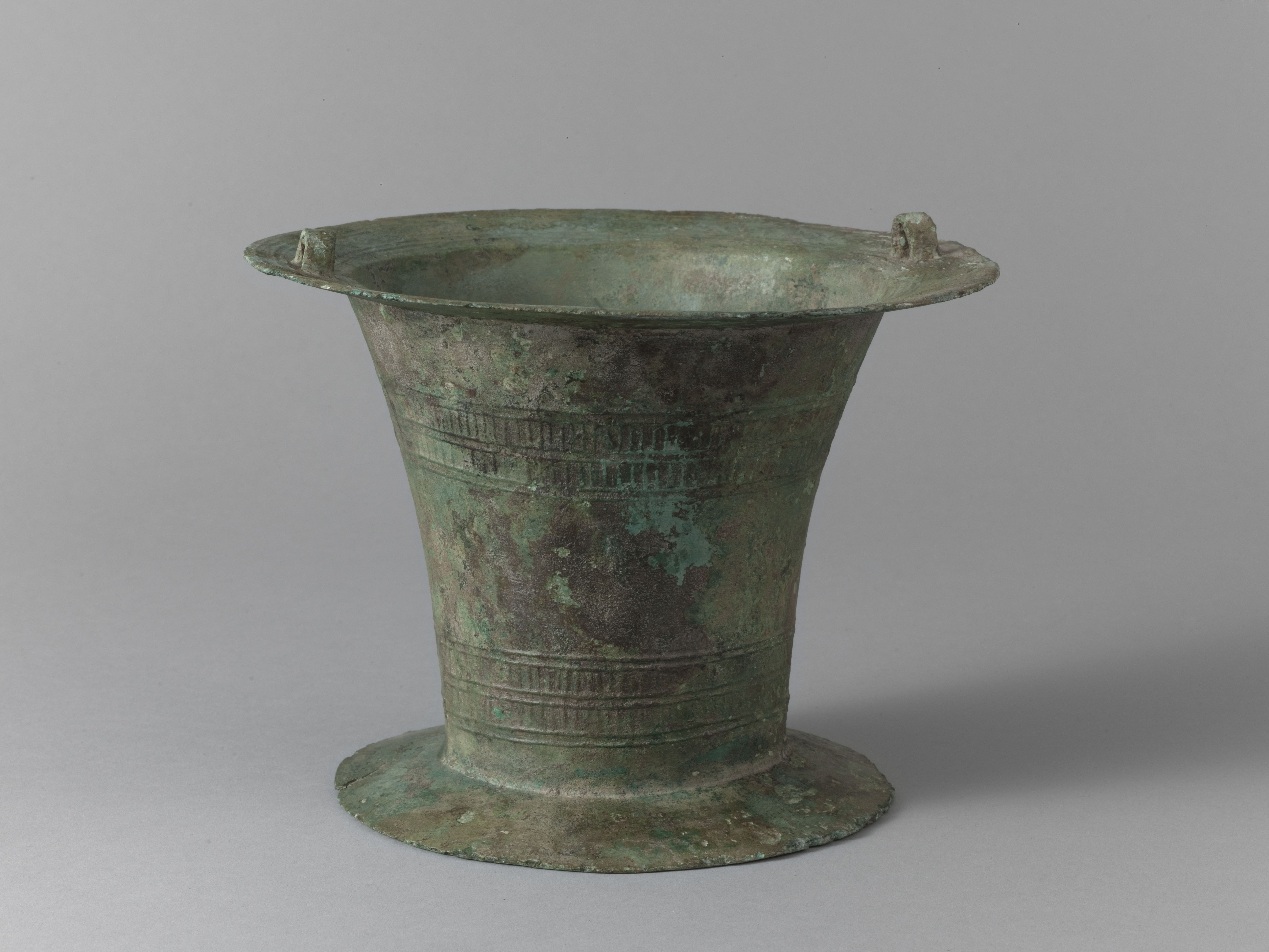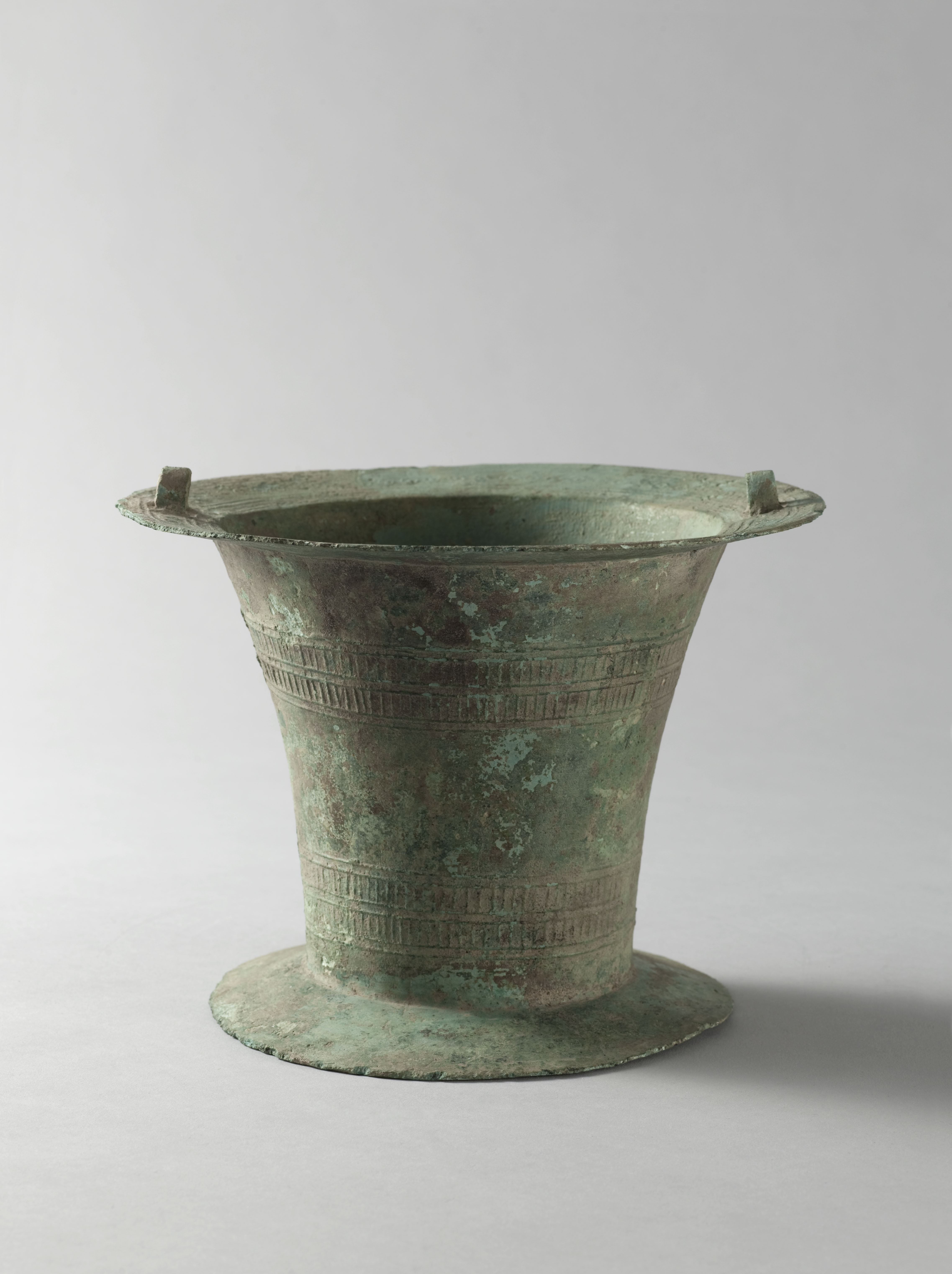
Situle thố
Bronze
Récipient ou contenant
Don fouilles : Janse, Robert Ture Olov; Mission Janse Indochine (1934-1935)
M.C. 8010
This thố situla has a flared body, a wide circular foot and a flat rim bearing two small vertical handles. The body is decorated with four bands of vertical hatching in delicate relief. The rim is decorated with a frieze of circled dots connected by tangents. These two decorative motifs are found on various types of bronze objects from the Đông Sơn culture, including thạp situlae, drums and axe blades.
The thố situlae are characteristic of the bronze items that were left as offerings in Đông Sơn culture tombs. Unlike thạp situlae, they do not have a lid and may have been used as spitting-pots when chewing betel. The thố are often decorated with a simple geometric motif, but depictions of symbolic animals, processions of warriors in canoes and ritual scenes appear to be found only on thạp situlae and drums. They continued to be used until the early 1st century AD, while a new mode of burial in brick hypogea suggests that the Chinese influence had largely taken hold.
Helen Loveday, Viêt Nam : Collection vietnamienne du musée Cernuschi, Findakly/ParisMusées, 2006, pp. 46-47.
Louis Bezacier, Le Viêt-Nam de la préhistoire à la fin de l’occupation chinoise, Manuel d’archéologie d’Extrême-Orient. 1ère partie : Asie du Sud-Est, tome 2, fasc. 1, Editions A. et J. Picard, Paris, 1972, pp. 143-146.
Cổ Vật Việt Nam, Vietnamese Antiquities (multiple authors), National Museum of Vietnamese History, Hanoi, 2003, p. 62.


